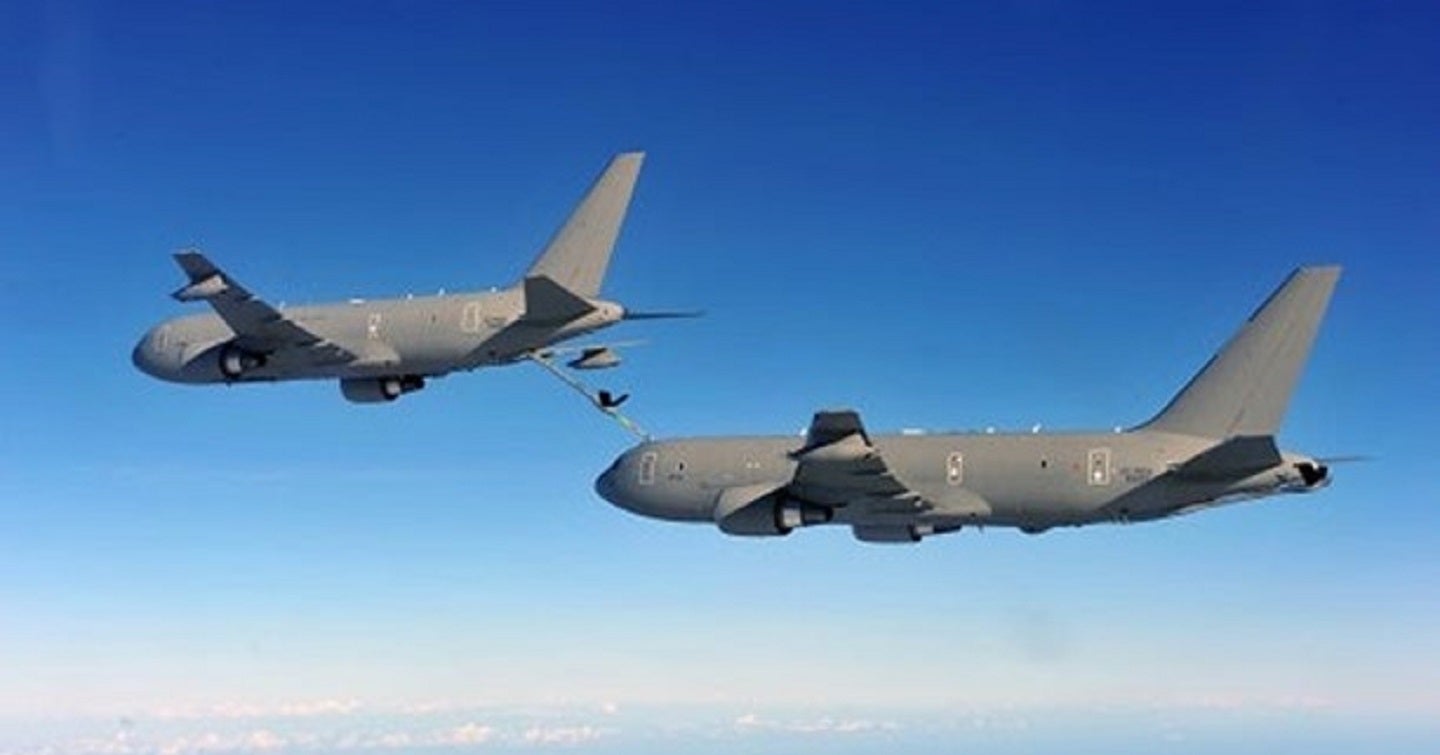
The Italian Air Force is looking to secure its KC-767A tanker transport aircraft while conducting air-to-air refuelling. The service has considered various ideas to mitigate the vulnerability of this process during global operations.
Leading intelligence consultancy GlobalData tells us that the nation’s air force comprises six KC-130J tanker units (acquired between 2000-2005) and four KC-767A tankers (procured between 2011-2015).
Italy has previously laid out its plan to procure the KC-464A Pegasus – an advanced tanker that will replace the KC-135 in the US Air Force (USAF). Japan has also inducted two units and Israel has acquired four.
Boeing developed Pegasus based on its design of the 767 jet airliner, which has led to the Italian designation of Pegasus as the ‘KC-767B’.
GlobalData Aerospace and Defence Analyst Tristan Sauer explained that if Italy does acquire Pegasus, “it would benefit from several survivability upgrades like better CBRN protection, infrared (IR) countermeasures, EMS hardening and armoured fuselage.
“Assuming that procurement goes through, the tanker fleet would grow from four to six while also providing a new and improved platform ready to accommodate additional upgrades over the coming decades as requirements evolve.”
How well do you really know your competitors?
Access the most comprehensive Company Profiles on the market, powered by GlobalData. Save hours of research. Gain competitive edge.

Thank you!
Your download email will arrive shortly
Not ready to buy yet? Download a free sample
We are confident about the unique quality of our Company Profiles. However, we want you to make the most beneficial decision for your business, so we offer a free sample that you can download by submitting the below form
By GlobalDataMilitarising Italy’s KC-767A fleet
Beyond the prospective acquisition of the Pegasus, with all its security measures for air-to-air refuelling, Italy is also seeking to “militarise” its current fleet of 767s.
The Boeing 767 tanker transport aircraft, is a high-performance version of the Boeing 767-200ER twin-aisle jetliner equipped for fully integrated tanker operations. the manufacturer designed the plane to conduct boom and receptacle refuelling, hose and drogue refuelling, or both.
The service considered IR countermeasures as a way of upgrading the 767 fleet. GlobalData tells us that countries are trying to integrate Electro-Optical (EO) and IR systems into modern warfare platforms to obtain information superiority and situational awareness, which would provide a critical solution to Italy’s tanker vulnerabilities.
Research in the field of third-generation forward-looking infrared, nonlinear crystals, laser radars, advanced 3D visualisation, persistent surveillance systems, multispectral and hyperspectral sensors, is leading to the creation of more capable EO/IR systems. GlobalData valued the global EO/IR systems market at $9.2bn in 2021, the company expects this to grow at a compound annual growth rate of 3.43% to reach a value of $12.9bn by 2031.
Moreover, the USAF has recently adopted a blended wing body (BWB), which is a design that integrates the aircraft’s body into its high-aspect-ratio wing, resulting in a 30% reduction in aerodynamic drag. This move, backed by investments, sets the stage for an evolution in airpower effectiveness, promising impacts on both military and commercial aviation sectors. The distinctive design of the BWB sets it apart from conventional tube-and-wing aircraft.
However, this advancement currently lies beyond the capabilities of the Italian Air Force; if the service starts to add on more capabilities, it will incur more costs.







